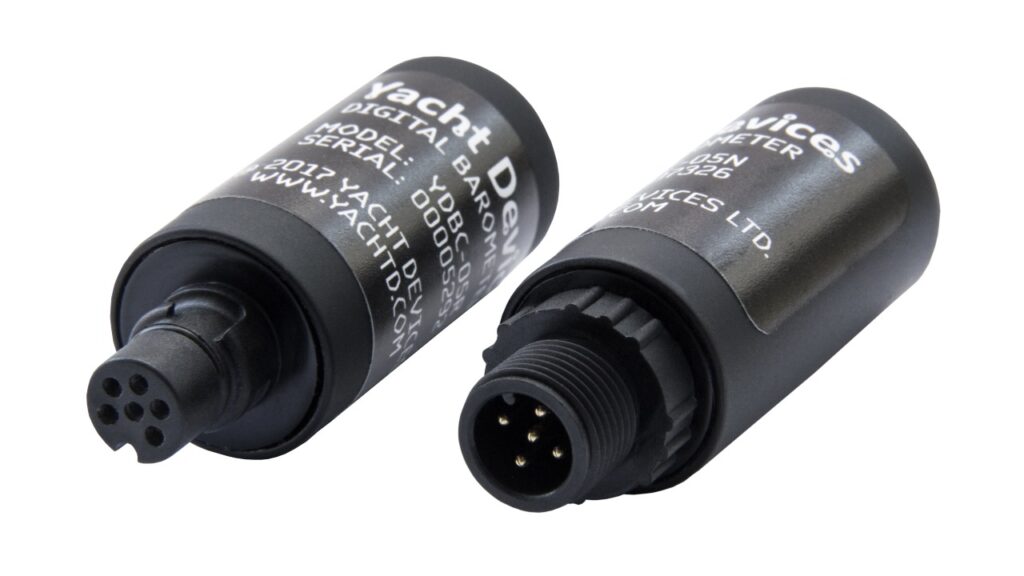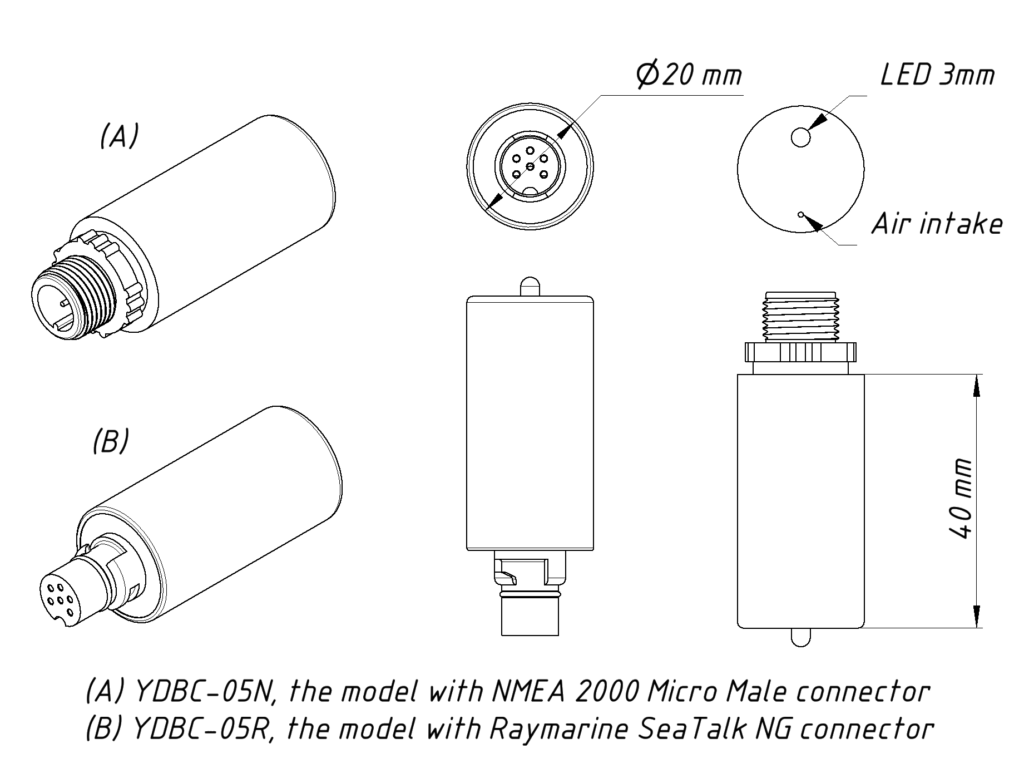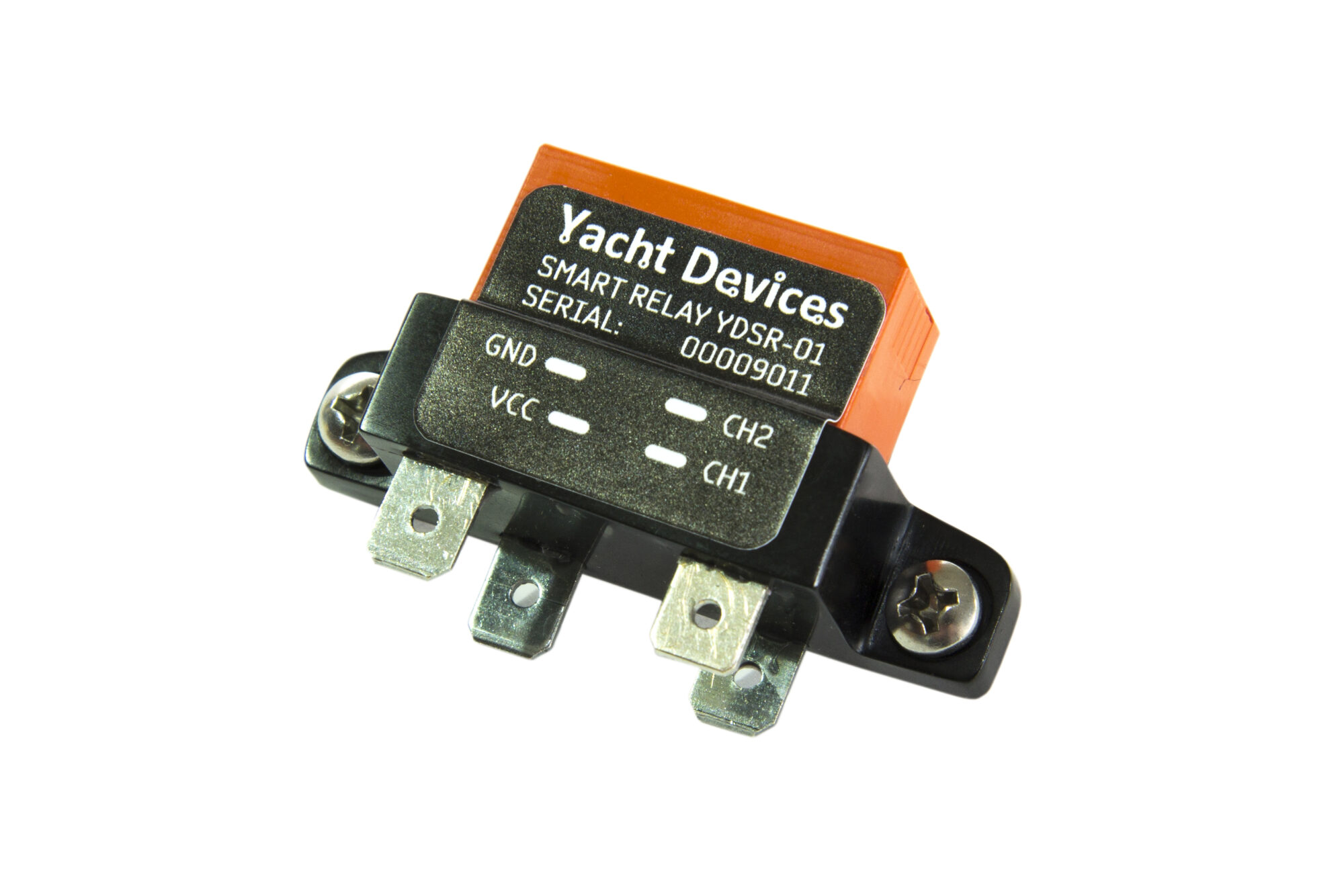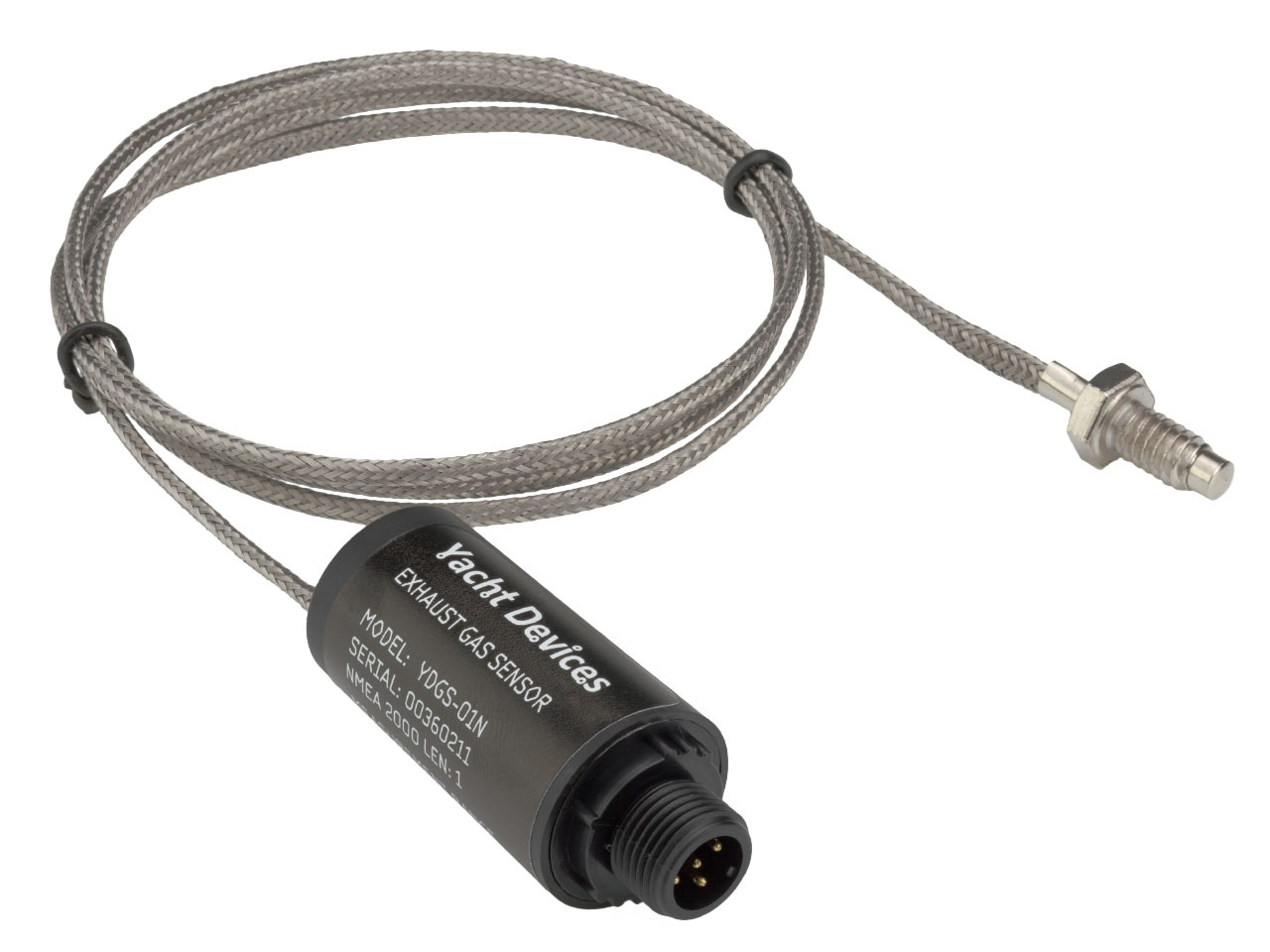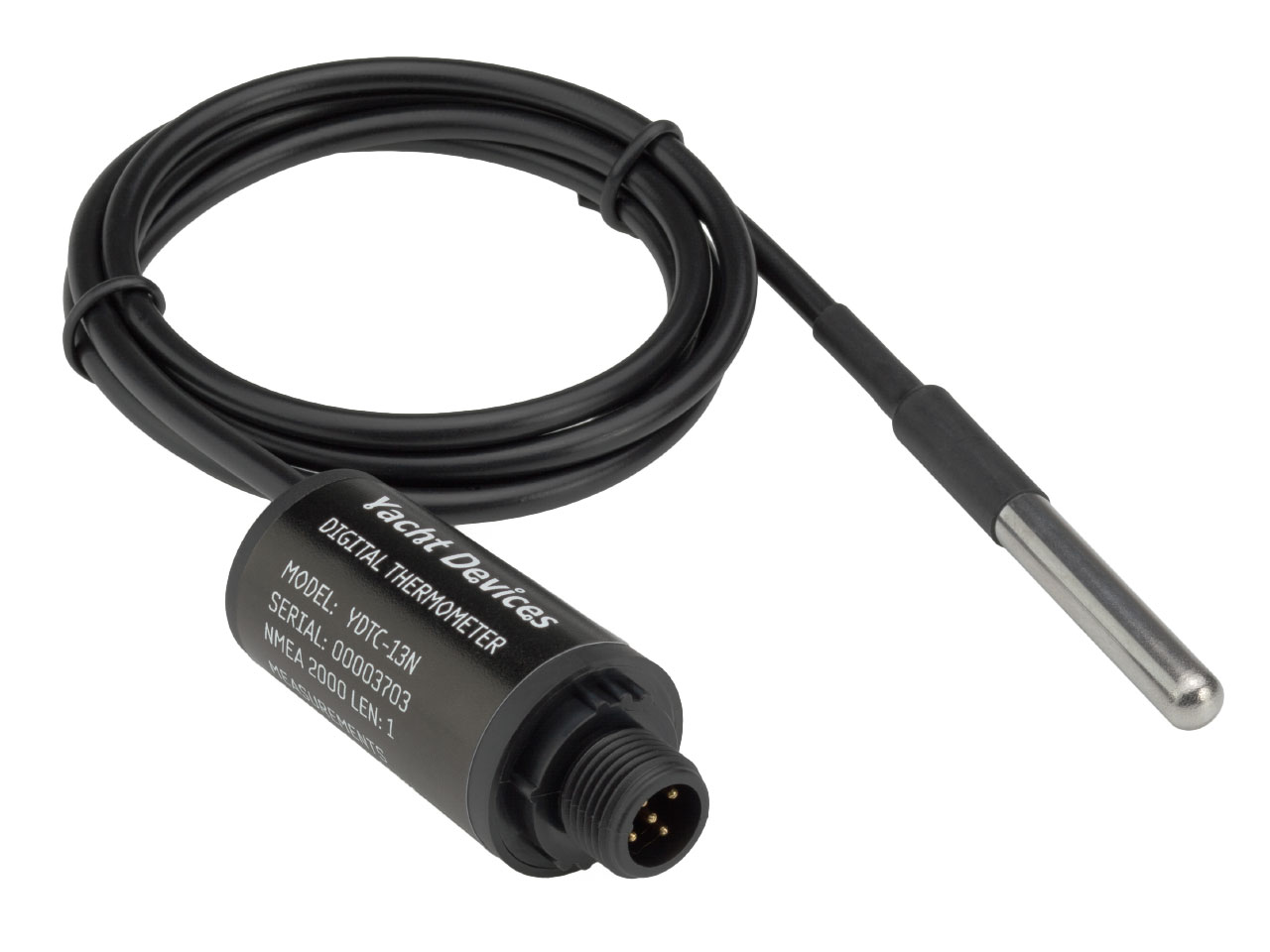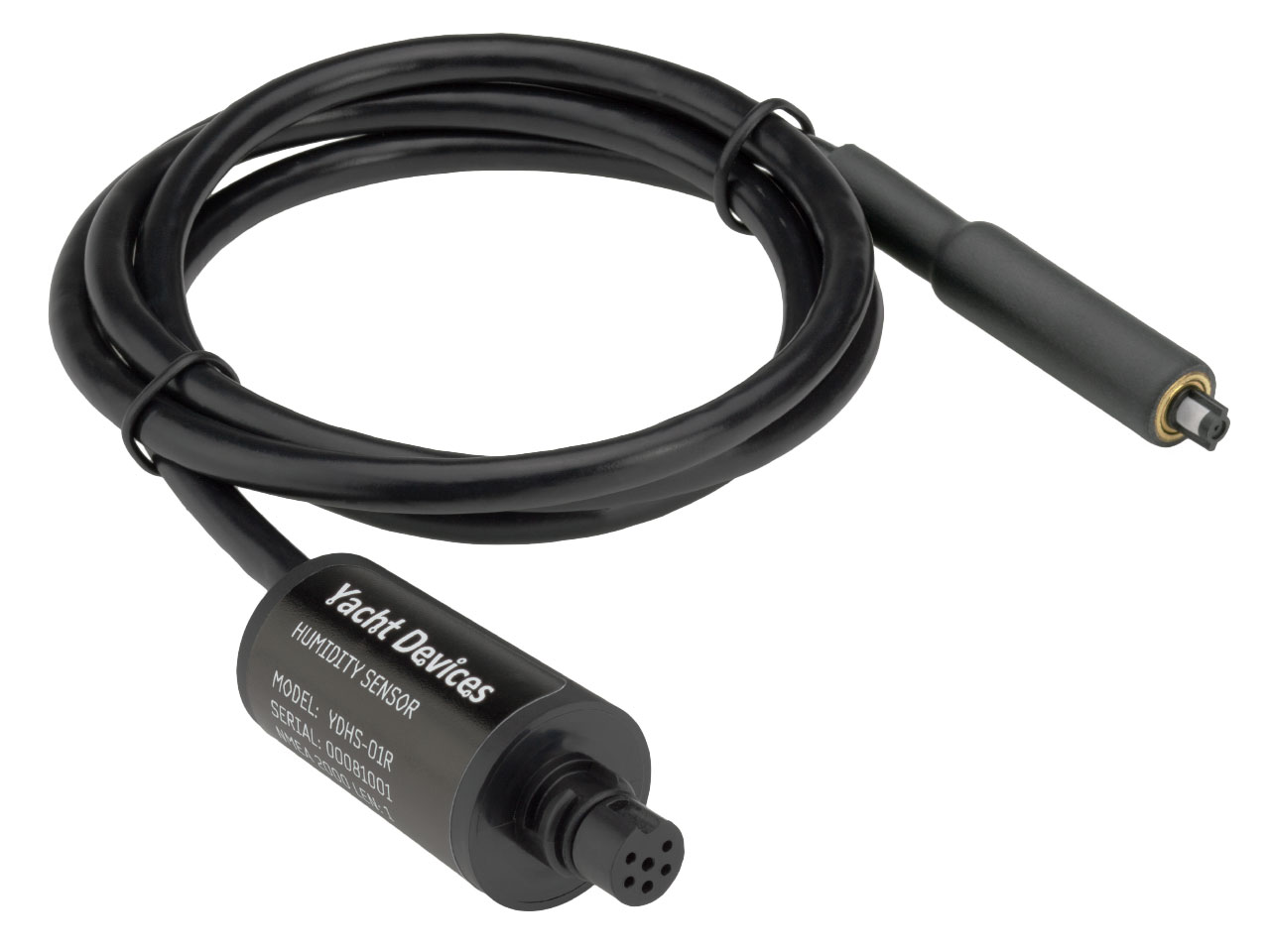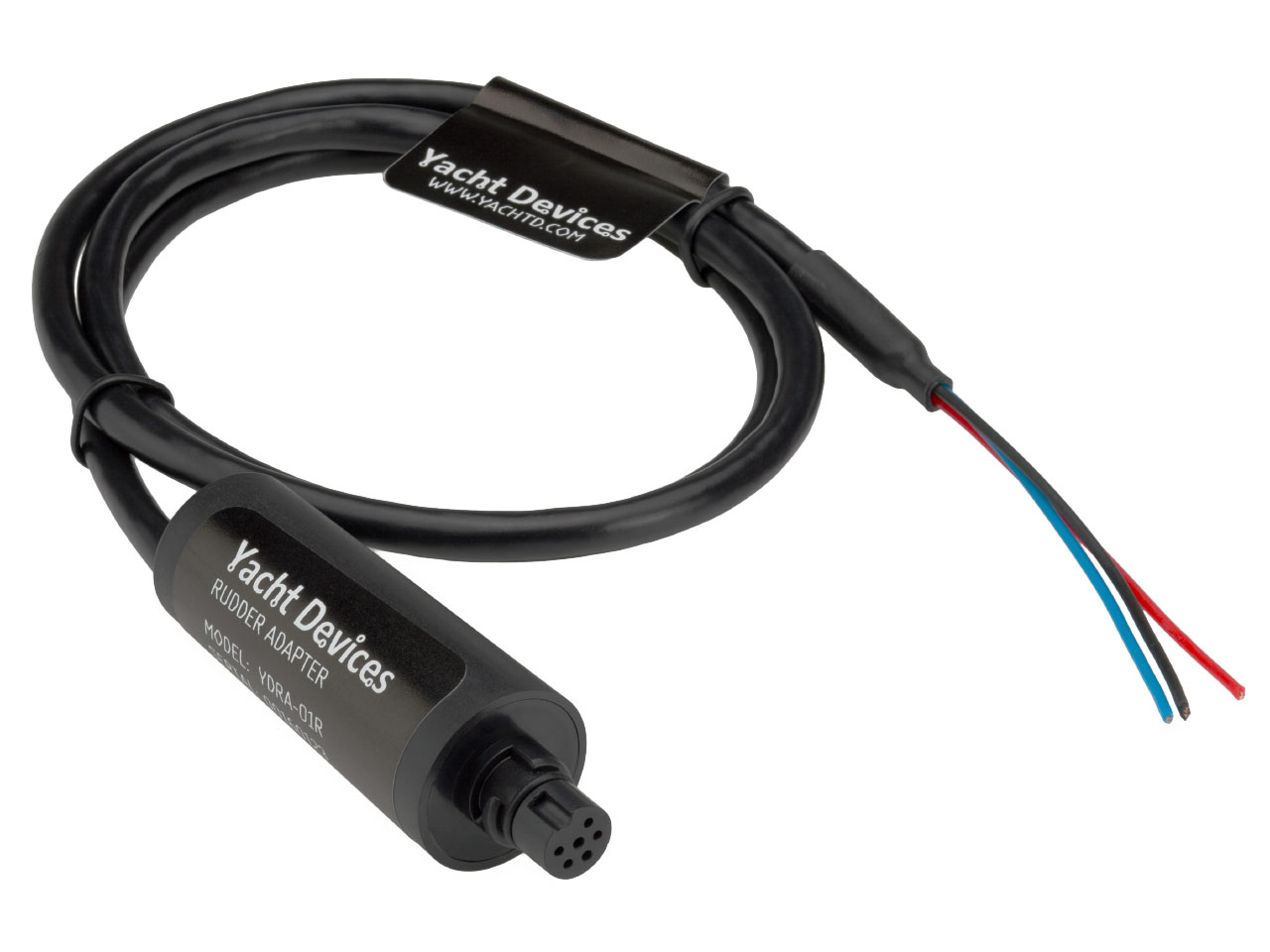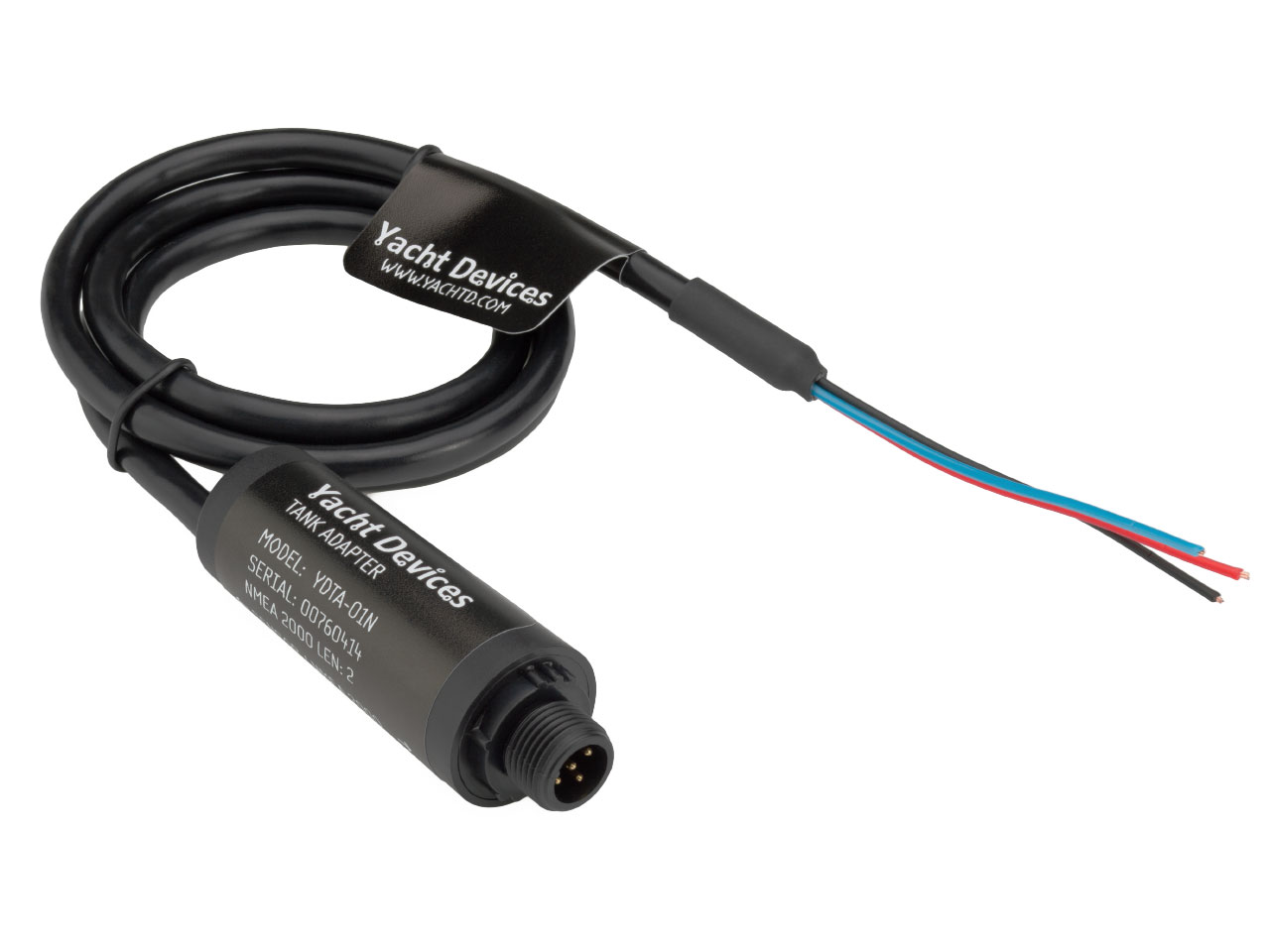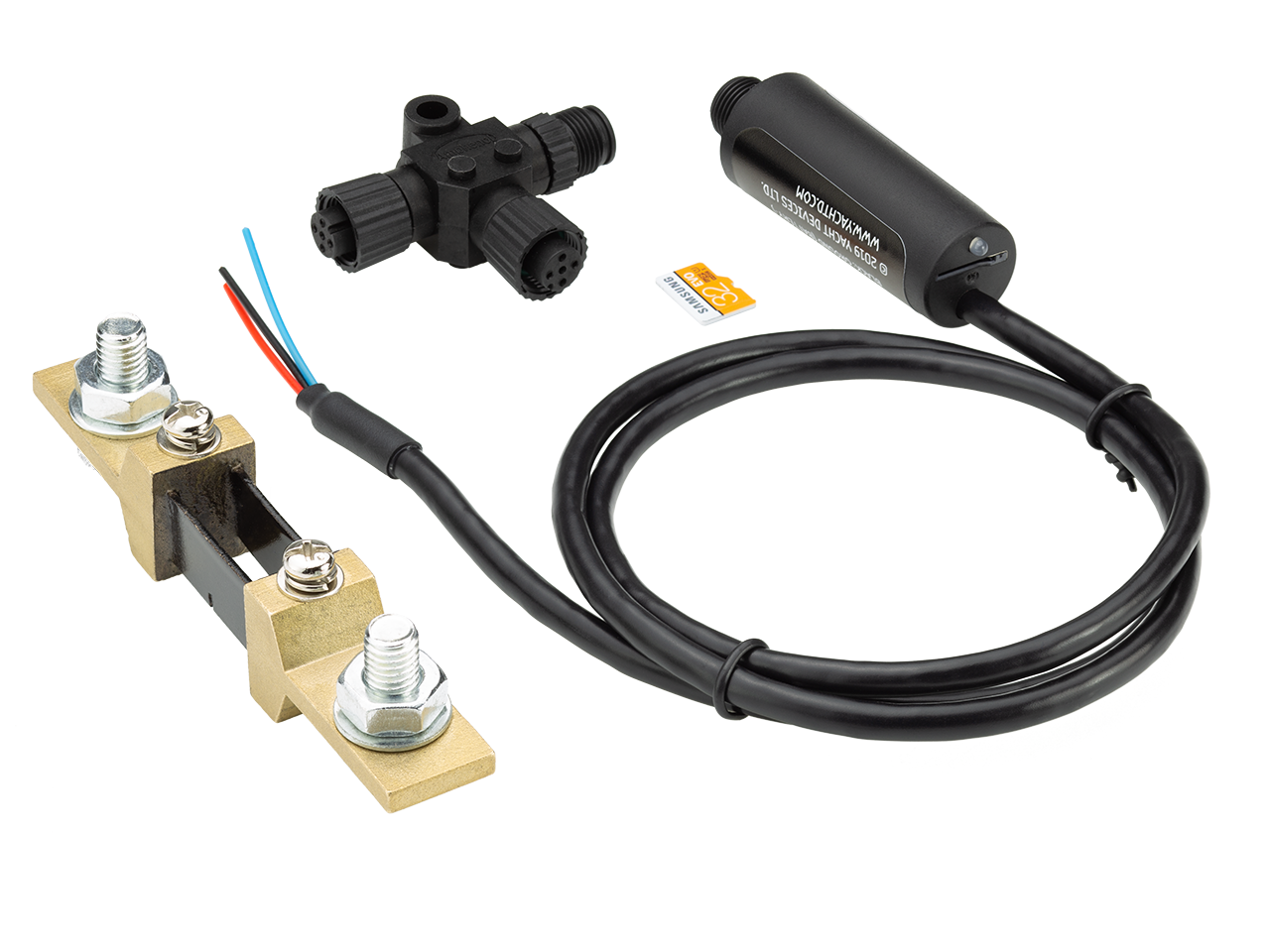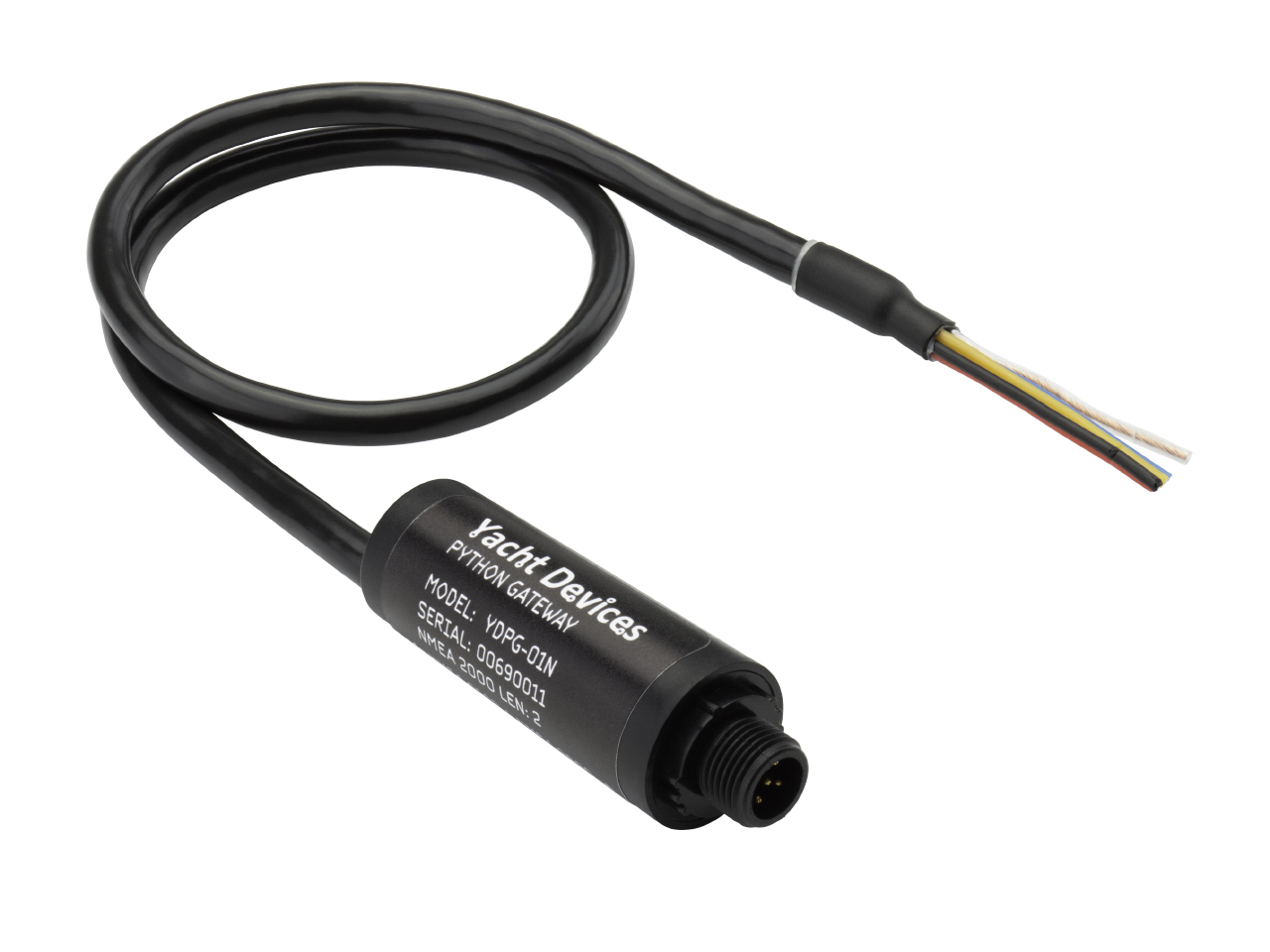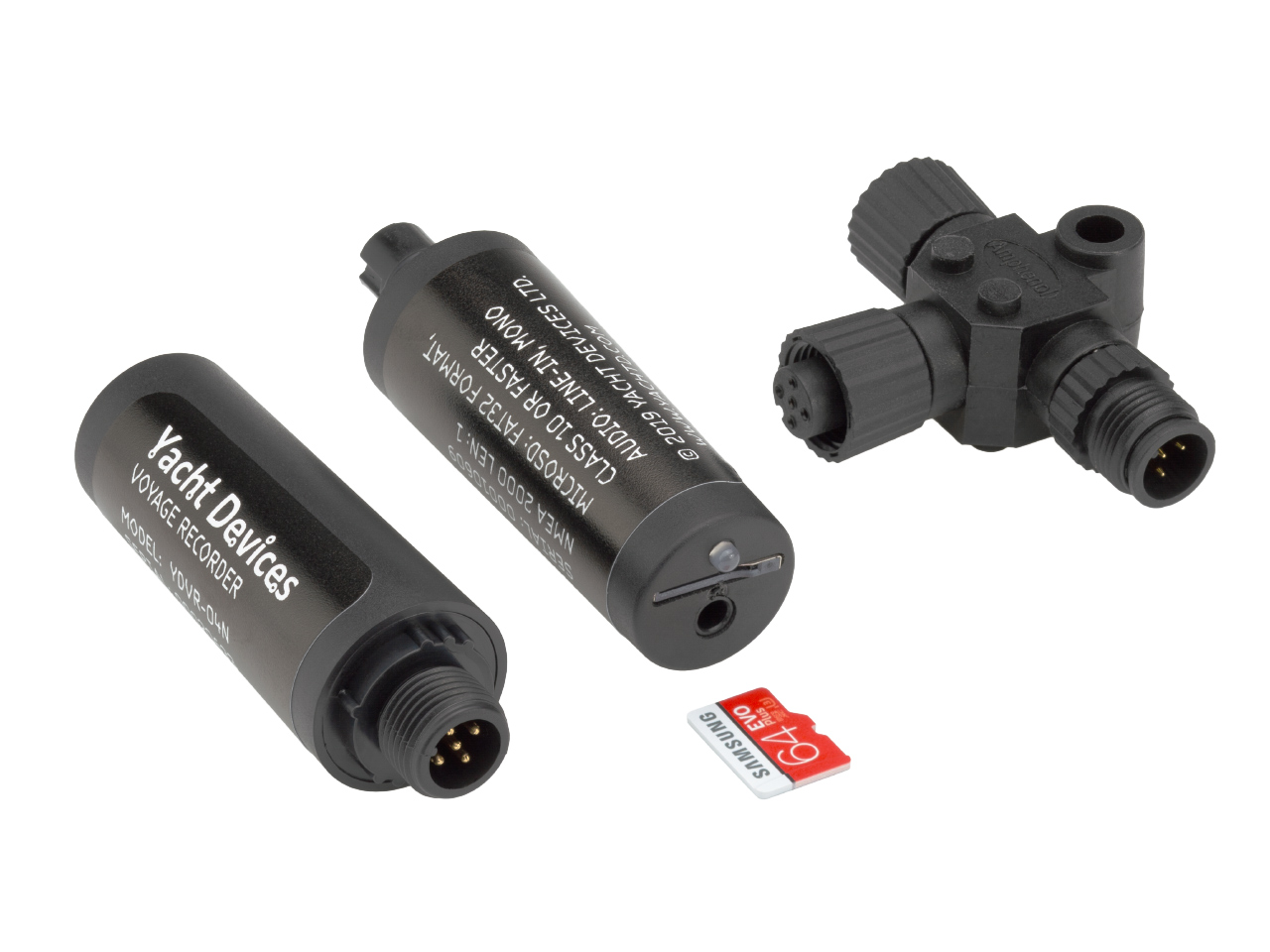The Barometer is intended for measuring atmospheric pressure within the range from 300 to 1100 hPa or mbar (225 to 825 mmHg), it provides chart plotters and instrumental displays with barometric pressure data.
This product is designed for weather monitoring. The sensor is located inside the device case. Many chartplotters and digital navigation instruments are able to display data on pressure in the form of graphs (modern Vulcan7, old ST70) or show a trend indicator; this allows tracking of trends in the weather change.
Pressure data output resolution to a NMEA 2000 Version 3 network is 0.01 hPa (mbar), absolute measurement accuracy is ±1 hPa, relative measurement accuracy is ±0.12 hPa. We also recommend our Humidity Sensor YDHS-01, it will provide your instruments with relative humidity, air temperature and calculated dew point temperature.
Device is plug and play, works right out of the box and does not require any settings. Calibration of the Barometer has been performed by the manufacturer. Therefore, you can set an offset from -10.0 to +10.0 hPa for the sensor readings to align with readings from other ship equipment. Programming of the NMEA 2000 device instance, system instance, data instance, description strings is also supported.
The Barometer can be configured by user to turn on or off specified channels of digital switching equipment. The conditions can be either the actual atmospheric pressure or the difference between actual pressure and the pressure 30 minutes or 1 hour ago. This allows a warning to be set concerning the rise or fall of pressure and upcoming weather changes (see Section VIII of the Manual for details).
The measurements of the last 48 hours are stored in the Device’s RAM and can be retrieved by compatible software or hardware to provide the user with historical data.
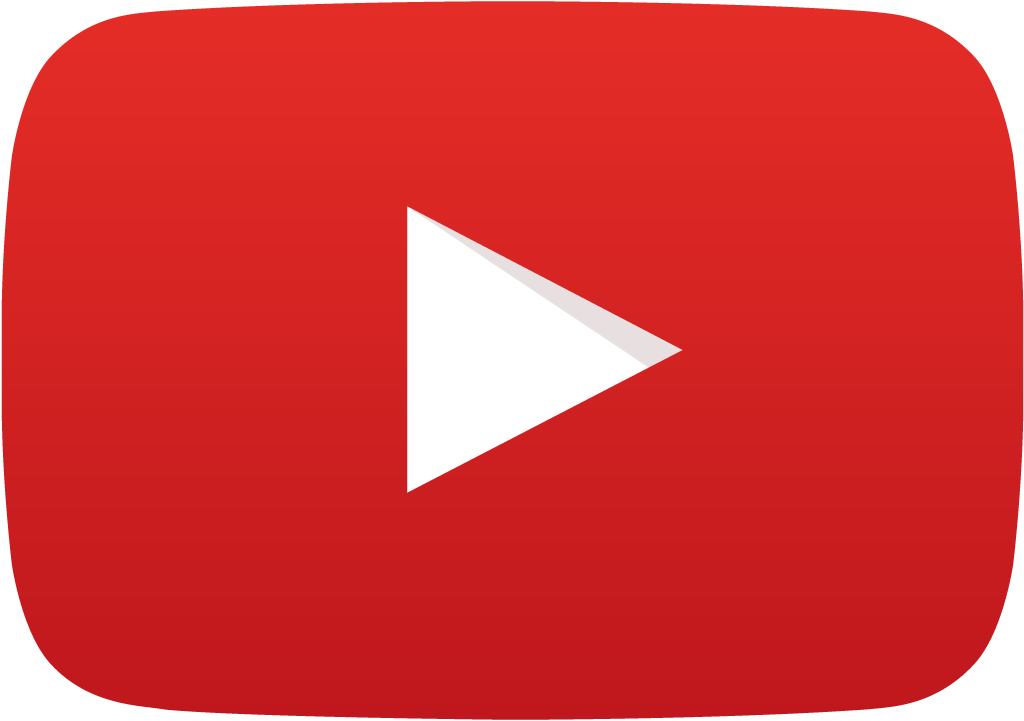 All our sensors support firmware updates and three programming (configuration) methods. The simplest way is to use a special installation description string which can be entered for the device in some modern models of chart plotters or in special software. Here you can see a video how to program the Humidity Sensor using CAN Log Viewer software, programming of the Barometer is the same.
All our sensors support firmware updates and three programming (configuration) methods. The simplest way is to use a special installation description string which can be entered for the device in some modern models of chart plotters or in special software. Here you can see a video how to program the Humidity Sensor using CAN Log Viewer software, programming of the Barometer is the same.
 See our old video with reviews of devices, installation on a sailing yacht and programming from a Raymarine C90W chart plotter. Thid is a tricky way, but it works almost everywhere and no special equipment is required.
See our old video with reviews of devices, installation on a sailing yacht and programming from a Raymarine C90W chart plotter. Thid is a tricky way, but it works almost everywhere and no special equipment is required.
Support of the Barometer in our other products:
If you have a NMEA 2000 Wi-Fi Gateway or Router, or an Ethernet Gateway from Yacht Devices, you can also manage the Autopilot from the Web Gauges using the web browser on your PC or mobile device. So, if you are not afraid of drowning your phone, you can have the remote control for your Autopilot at no extra cost. With these devices, you can also use the CAN Log Viewer software to view the Autopilot’s internal settings, easily tune it and update the Autopilot’s firmware.
The Device is supplied with SeaTalk NG (YDBC-05R) and NMEA 2000 Micro Male connectors (YDBC-05N), making it possible to connect it to networks of different manufacturers without any adapters. The Device model is shown on the case.
No free connectors on your bus? Not a problem! Device models with the T index at the end of their names contain a built-in terminator and are connected to the network instead of a terminator. This allows zero-cost connection of the Device to existing networks with no available connectors.


